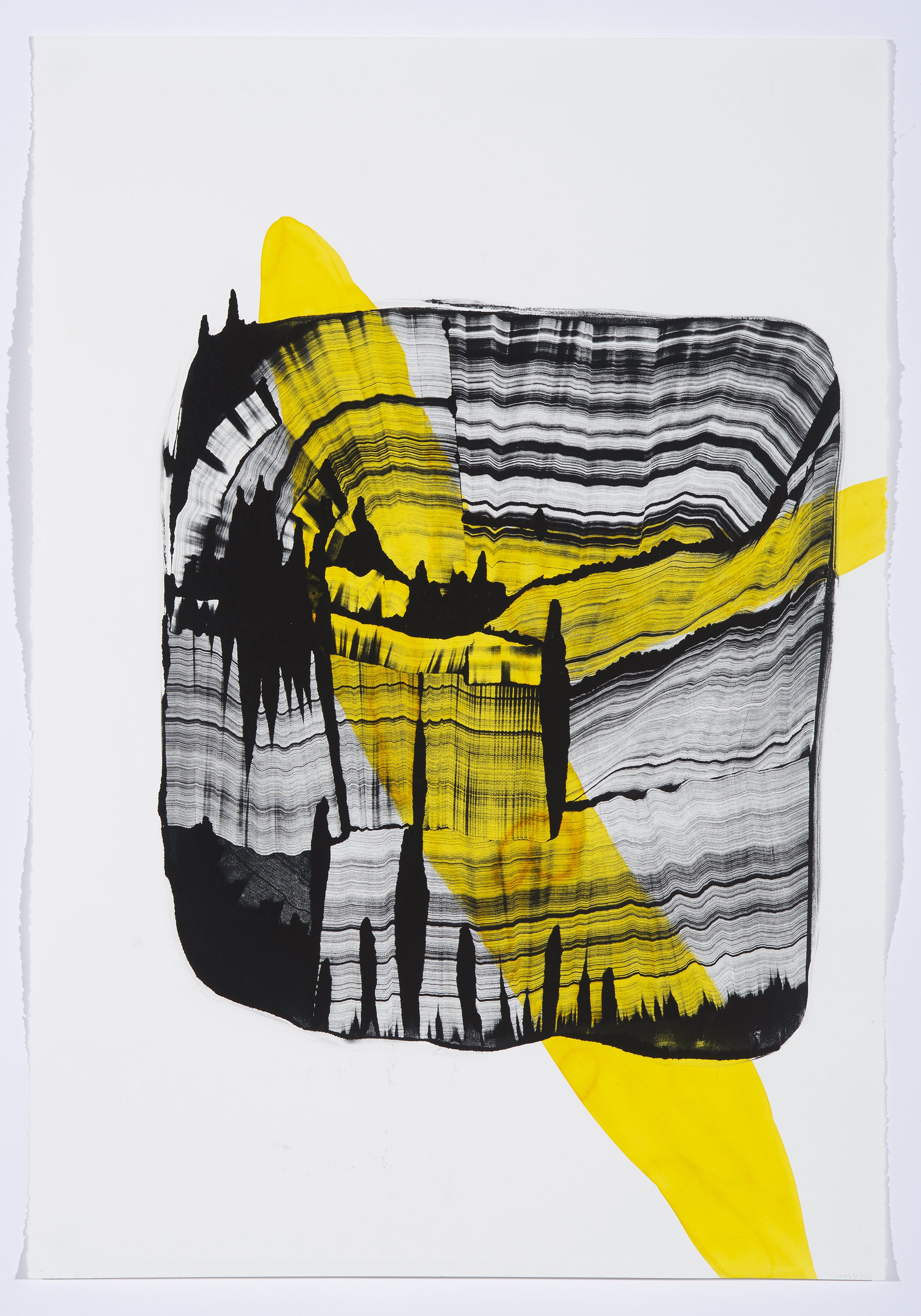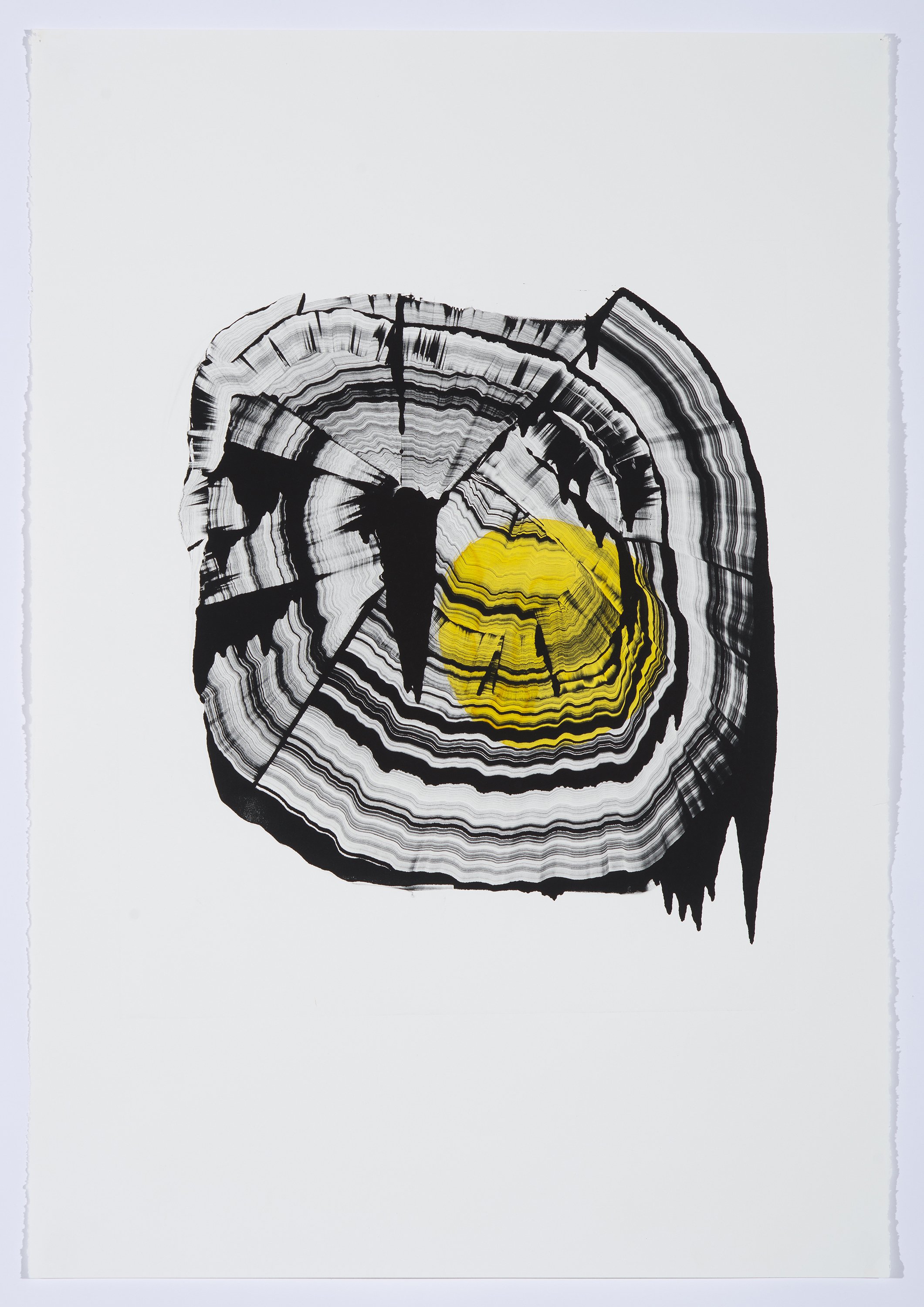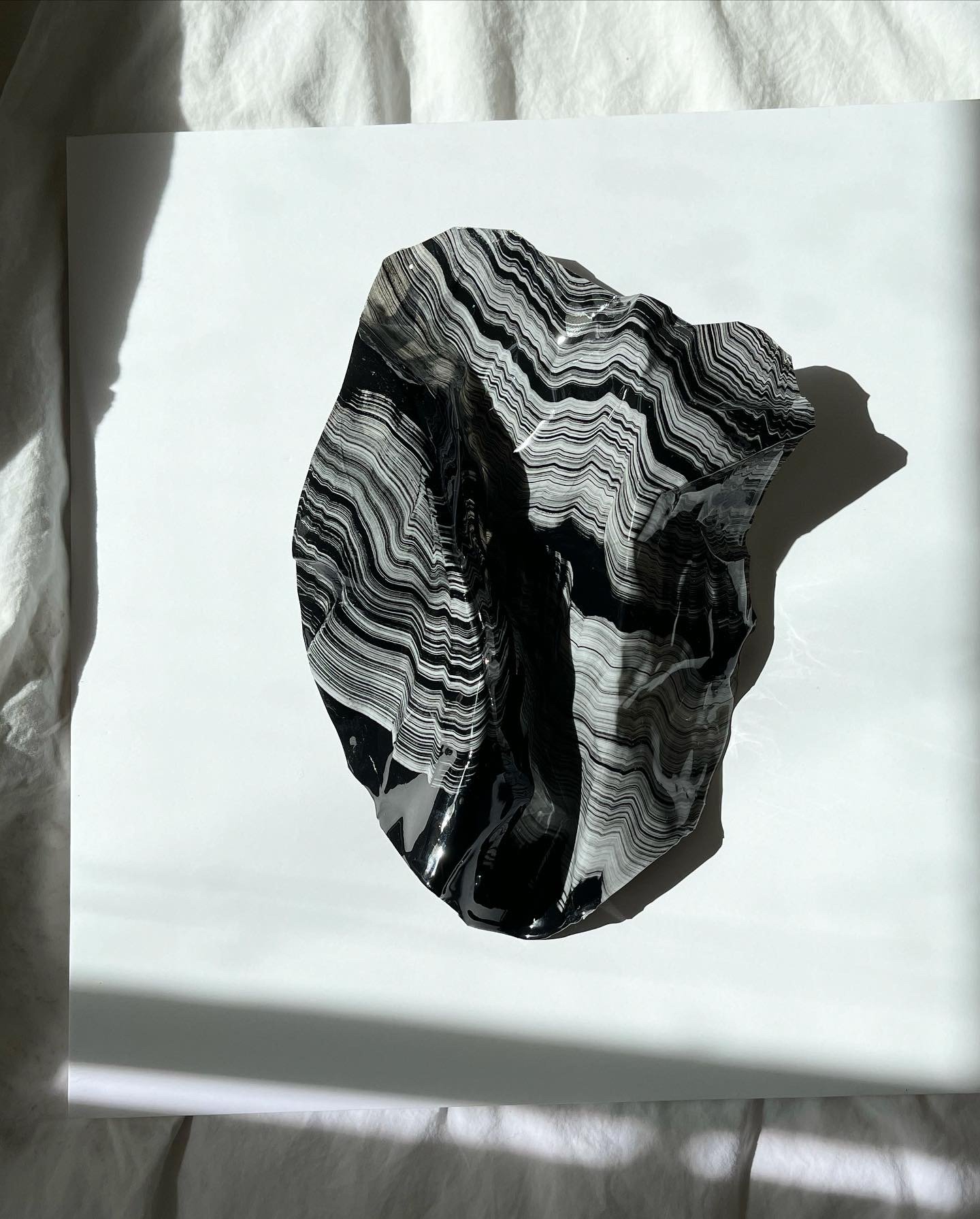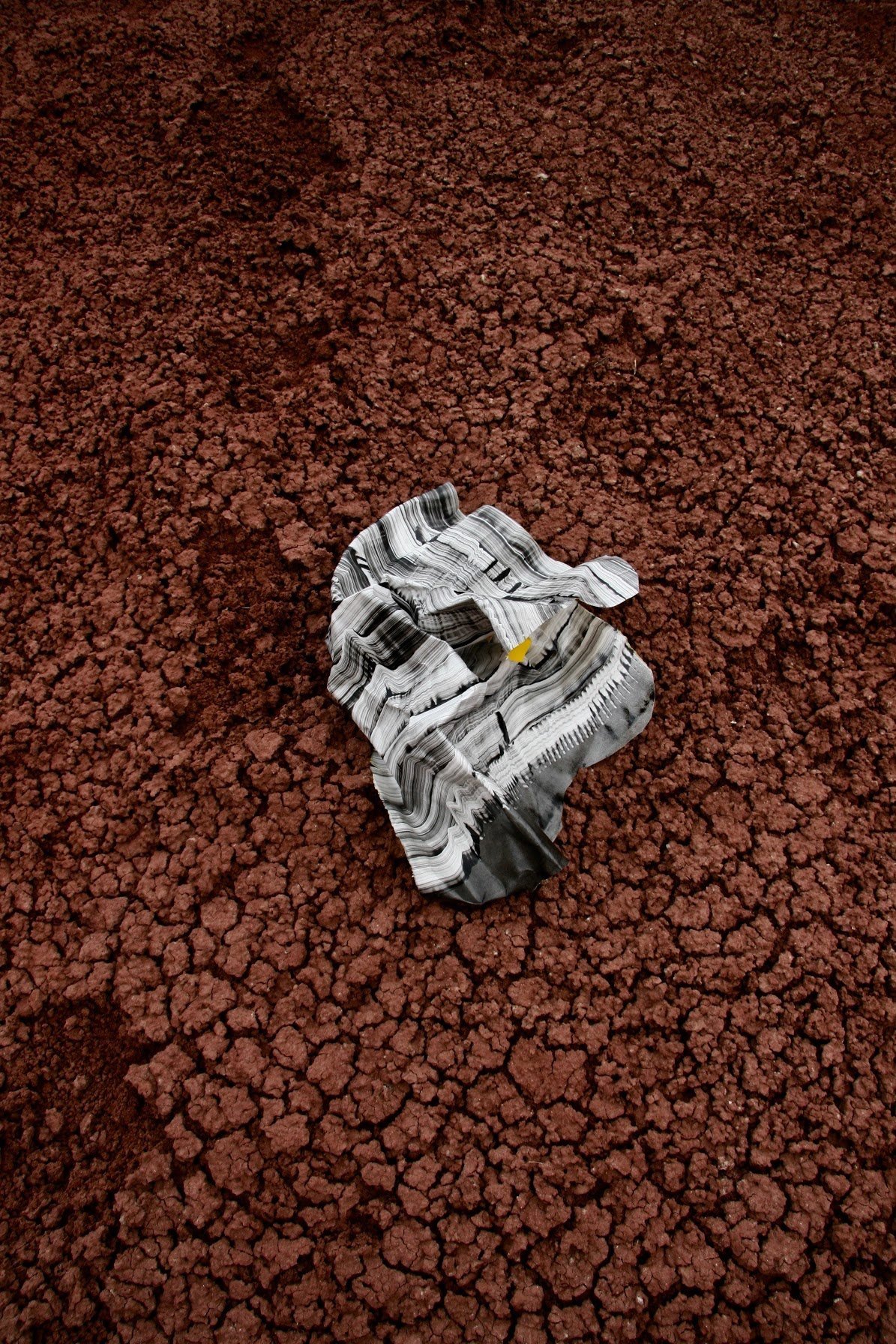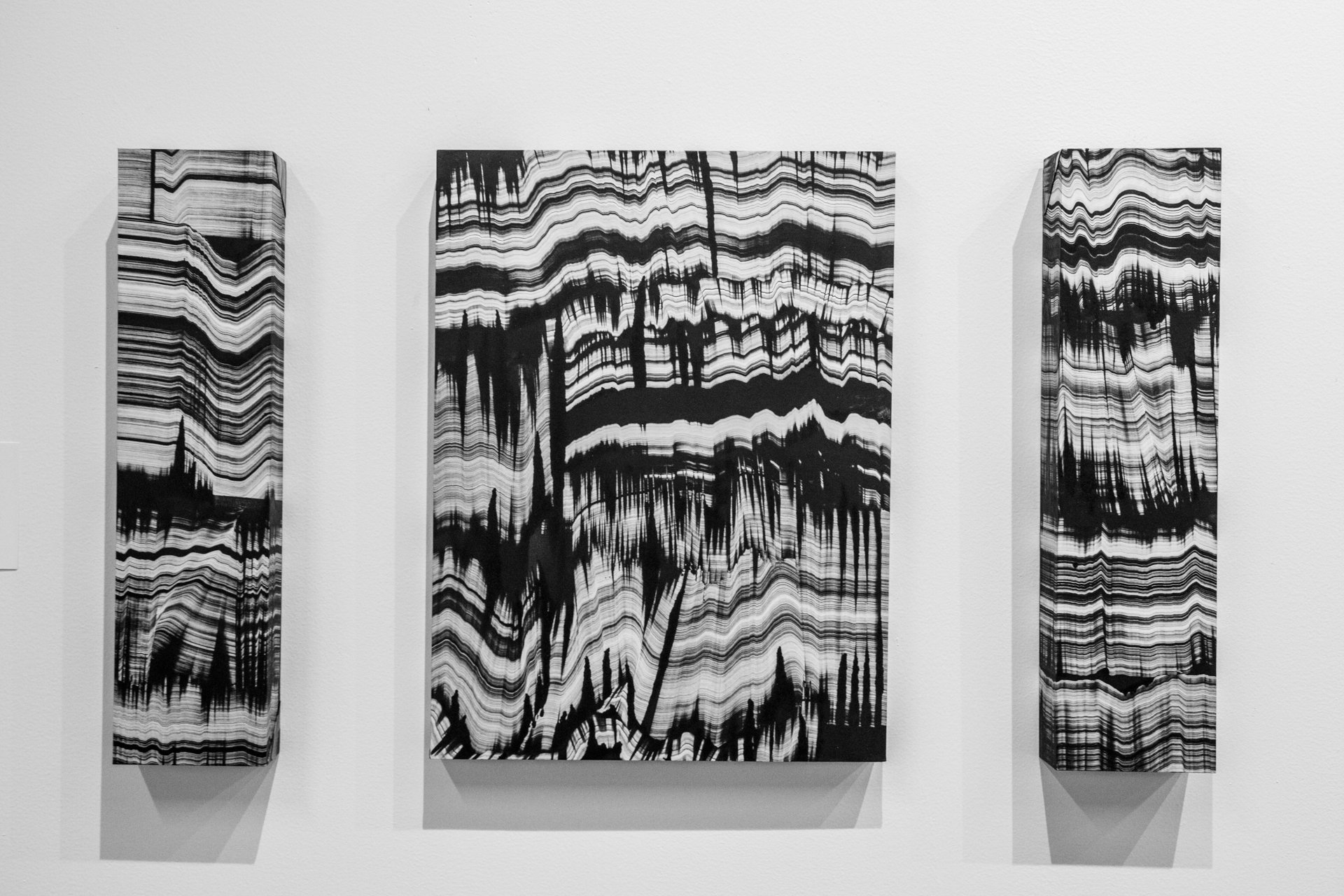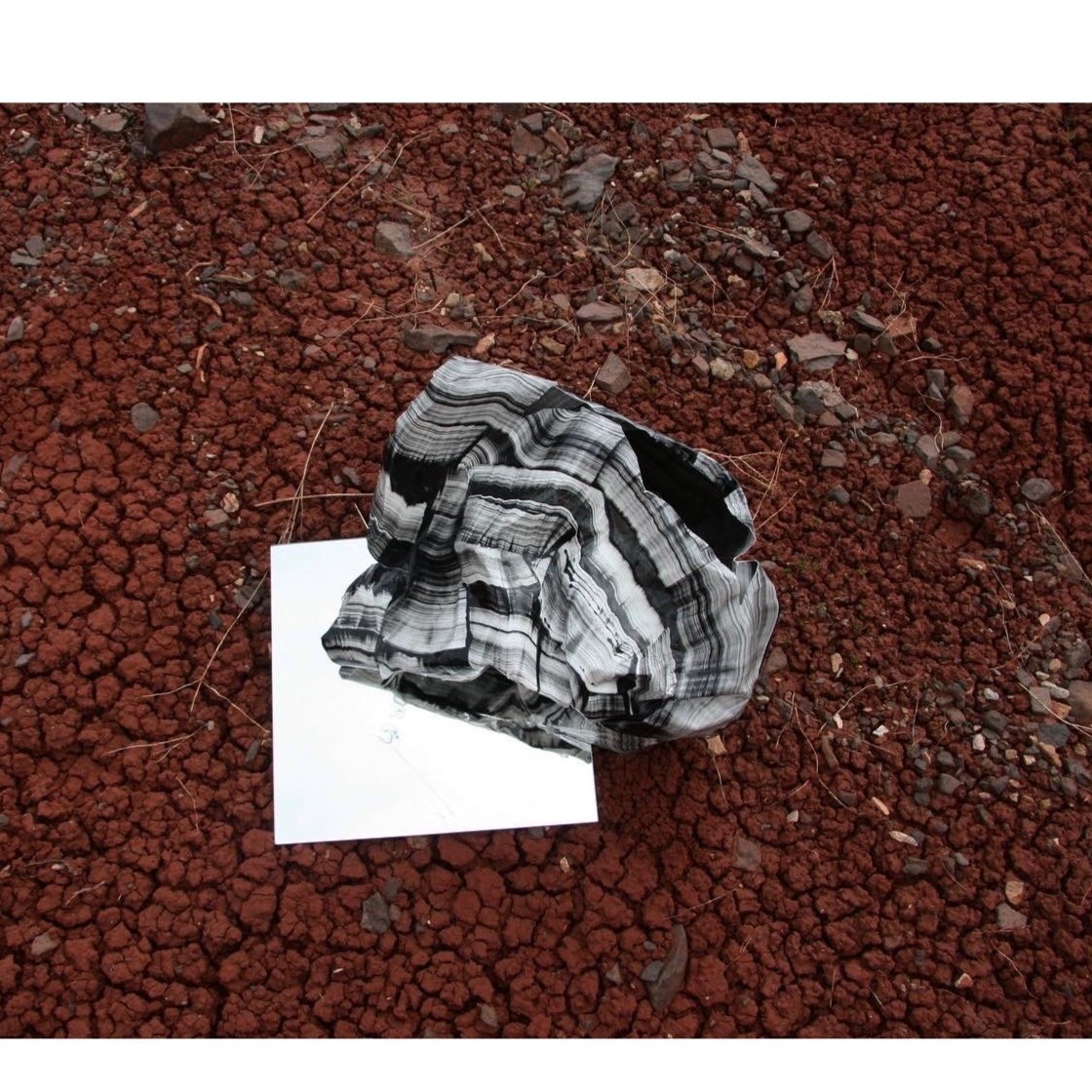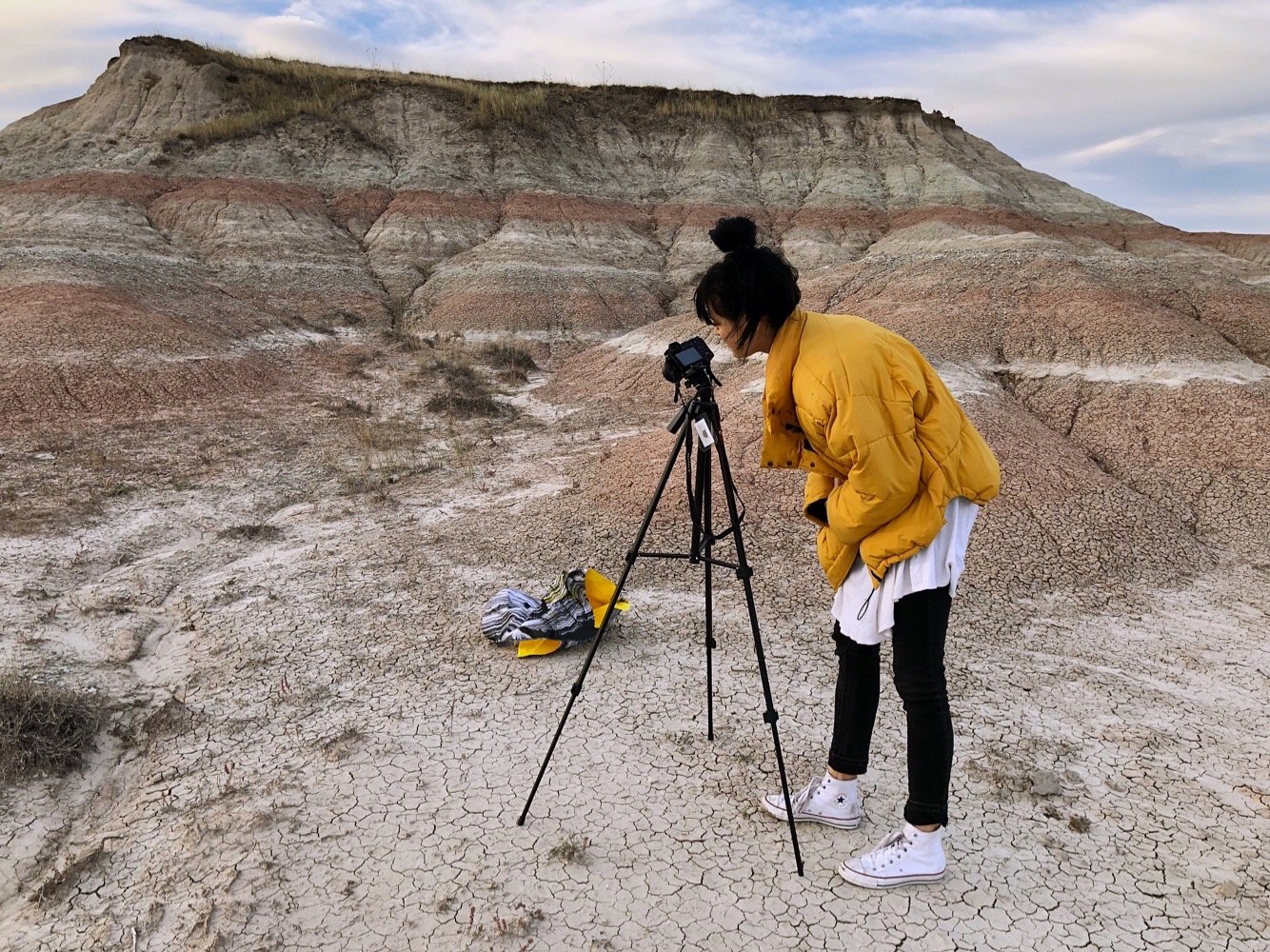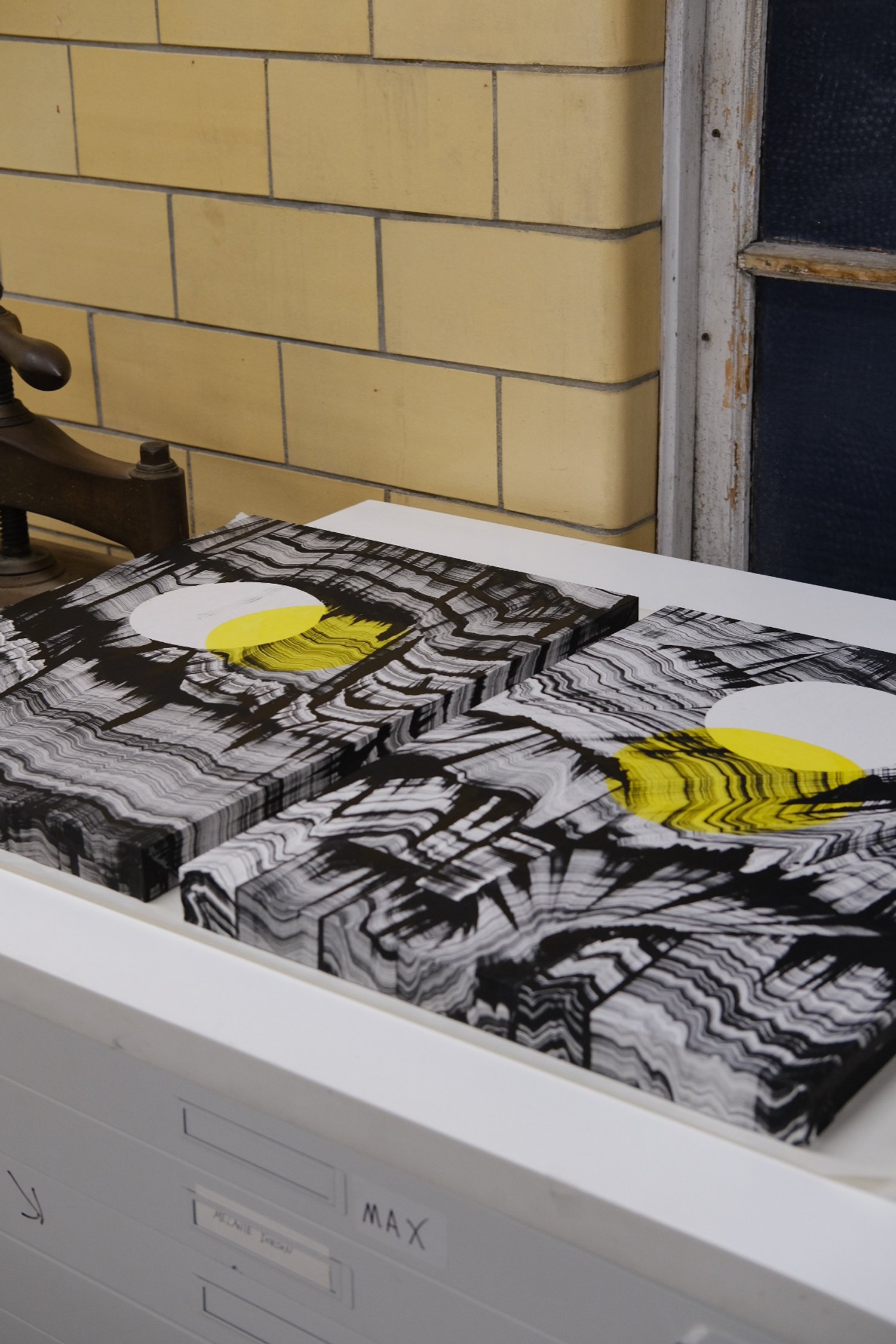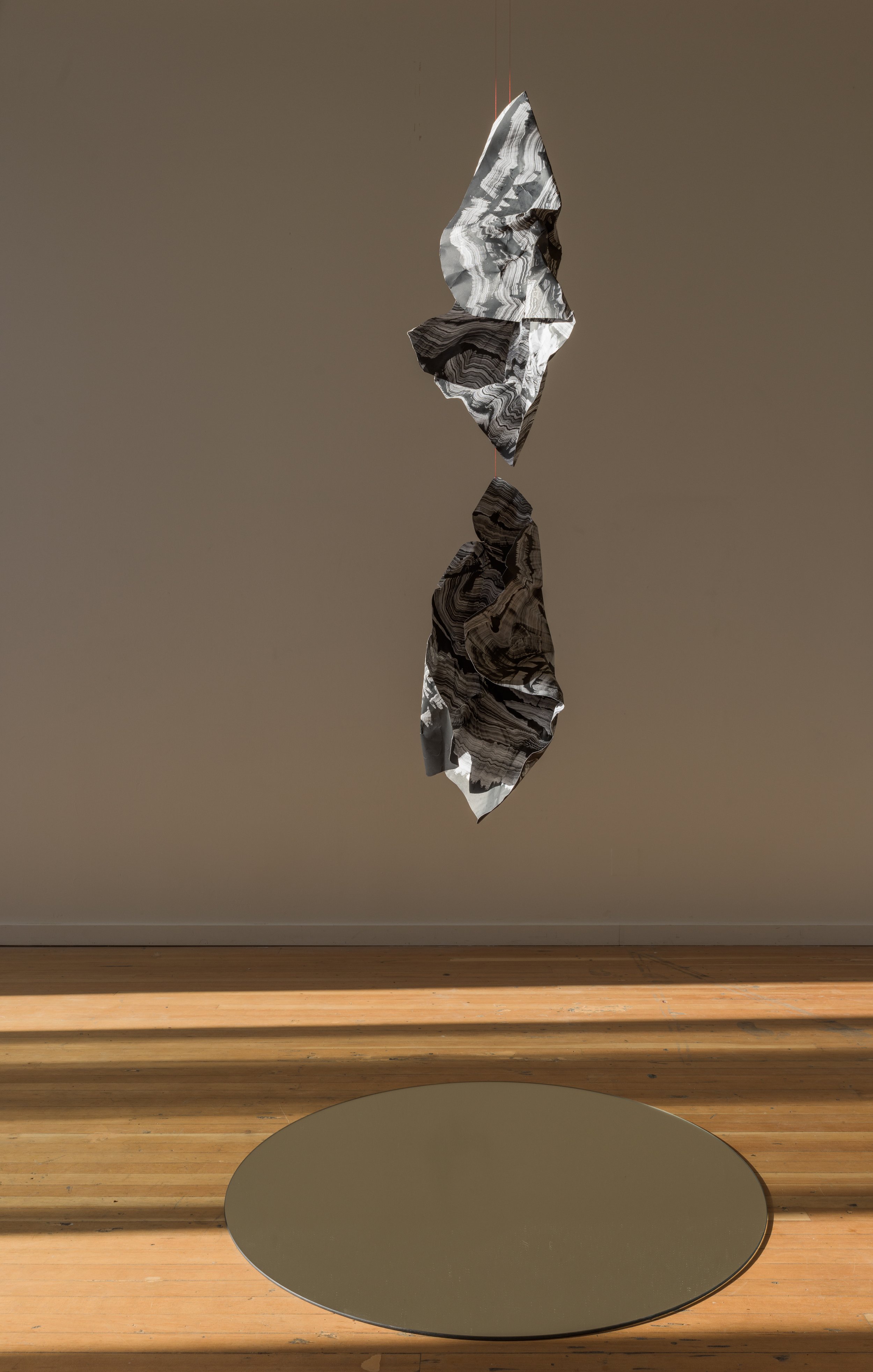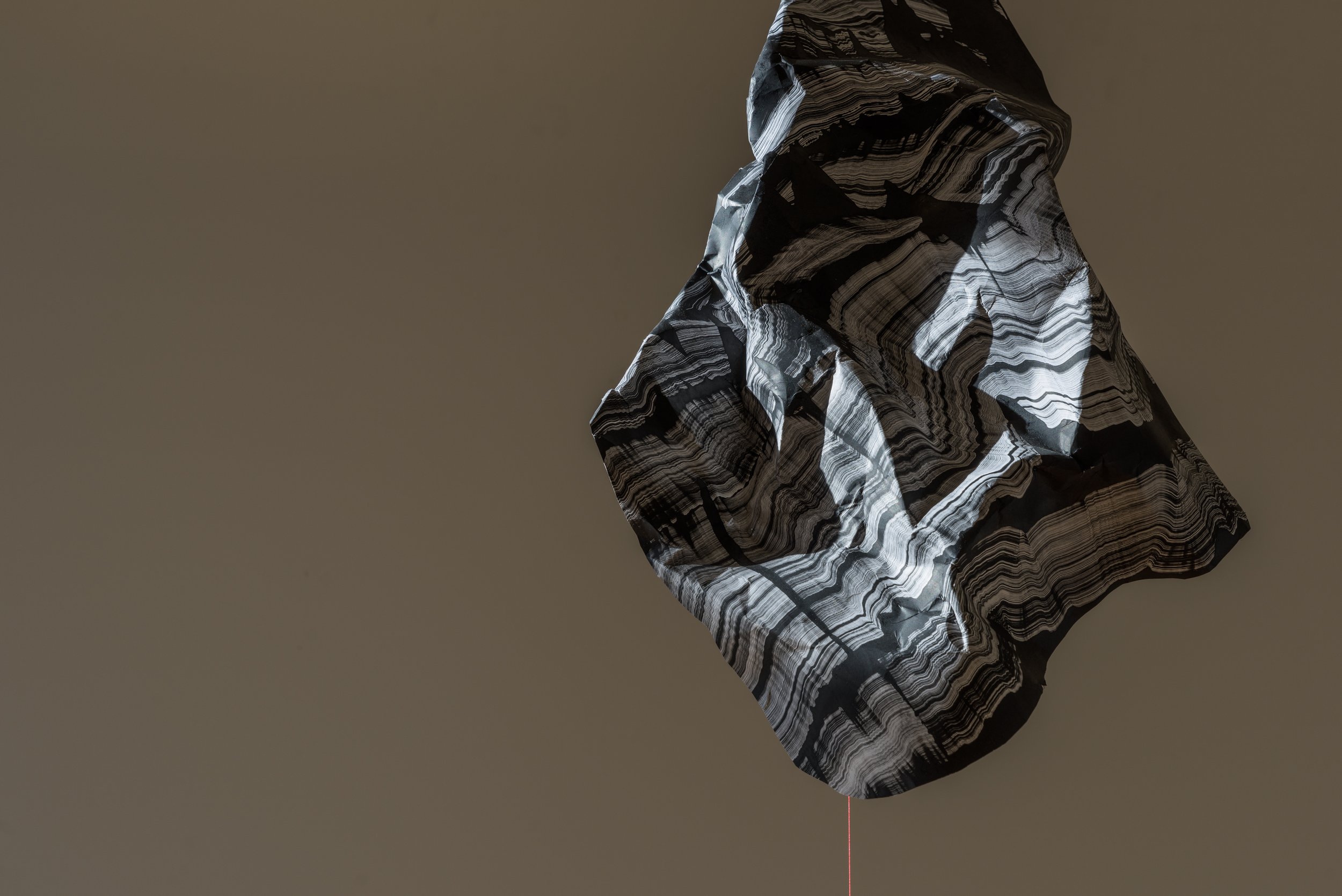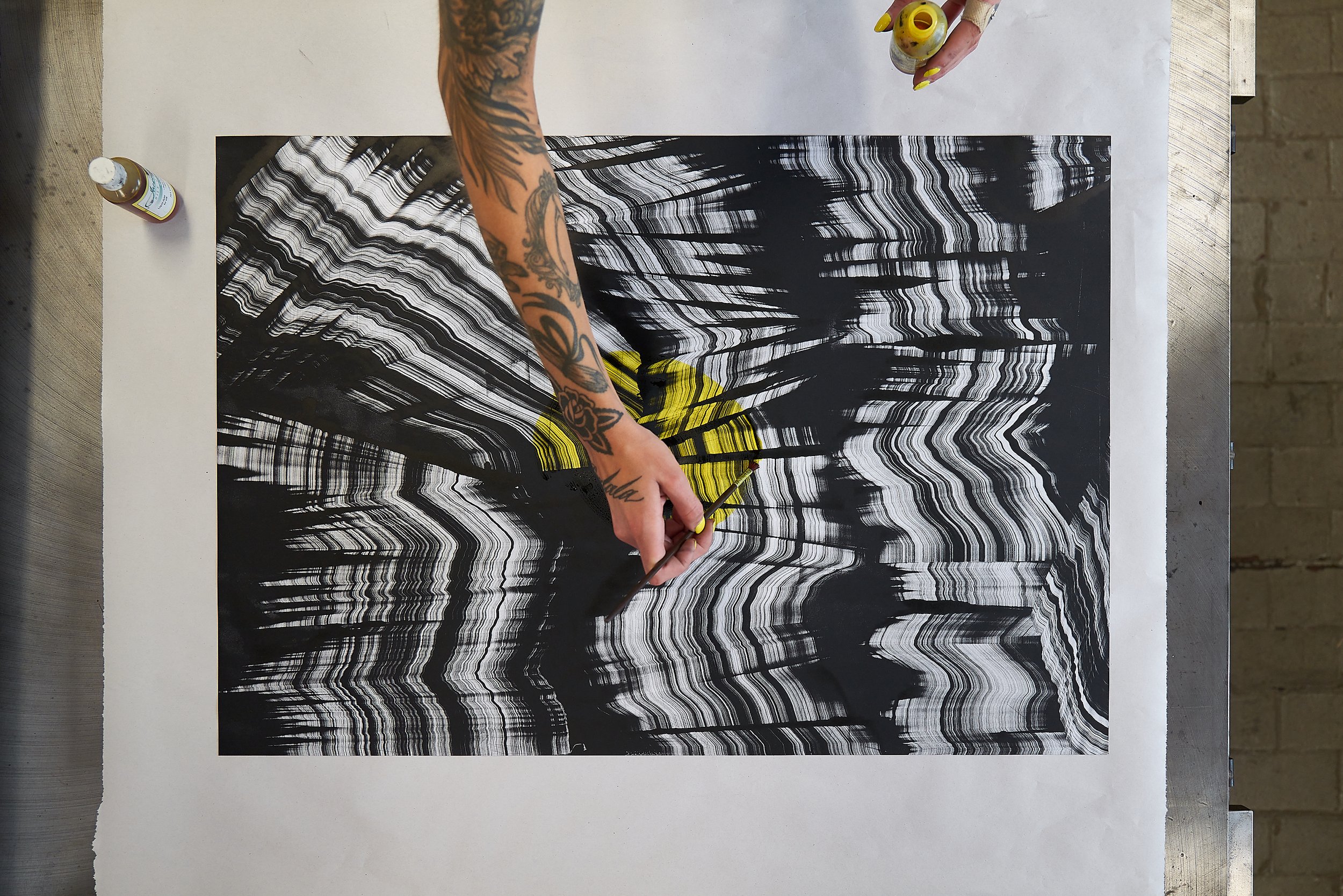
Angelica Trimble-Yanu, born and raised in Oakland,California is an enrolled member of the Oglála Lakȟóta Sioux Nation from the Pine Ridge Indian Reservation in South Dakota. Angelica is a Curator, Designer and Visual Artist. She holds a Bachelors in Fine Art & Printmaking from The Pacific Northwest College of Art. Angelica’s work has been exhibited at prestigious venues such as the The De Young Museum, MarinMOCA and the Palazzo Albrizzi-Capello during the 2022 Venice Art Biennale. Angelica was nominated for the esteemed SFMOMA SECA Award in the same year shortly after her first Solo Exhibition, BLACK SUN at San Francisco’s MRKT Gallery. Her interdisciplinary and community based practice has lead her to numerous public residencies and artist talks with Google, The De Young Museum, The Institute of Contemporary Art SF, The Berkeley Art Center, Kala Art Institute, Oregon State’s Eena-Haws Native American Longhouse, and Santa Clara University. Her talent has been acknowledged through various awards, including two accolades in writing and printmaking from the Pacific Northwest College of Art and an Expert Printmaking Award from Zealous England. Her talent has garnished attention by various publications, both locally and internationally, including The Palo Alto Daily, The Oregonian, Divide Art Magazine, PBS Newshour and The Racket San Francisco.
As an Indigenous Oglála Lakota Artist, my creative journey is an interdisciplinary exploration of printmaking and sculpture, deeply rooted in the ancestral memory of the sacred homelands of the Ȟe Sápa (Black Hills, South Dakota). Through Monotype printmaking and site-specific sculpture, I draw from the rich visual language of our Lakota systems of knowledge.
In the realm of printmaking, I employ graphic black and white strokes in my Monotypes, traversing the delicate boundary between representation and abstraction, between presence and absence, between the tangible and the intangible. This artistic liminality serves as a profound reclamation of the Indigenous worldview, the sacred landscape, and the intricate threads of our history that bind us together as a people.
My artistic inquiry delves into both the physical and spiritual dimensions, merging the intricate processes of sculpture and printmaking to explore the profound Lakȟóta relationship between the human and non-human worlds. Central to my perspective is the concept of Mitákuye Oyás’iŋ (“All My Relations”), rooted deeply in Lakota kinship, where every entity is interconnected and deserving of reverence and protection. In honoring this worldview, my art is imbued with traditional Lakota principles around form, color, and sacred numerical theologies.
Within my paper sculptures, I seek to transcribe light, movement, and time, encapsulating them within tangible forms that serve as conduits for ceremonial expression. In this way, I transcend the limitations of settler conceptions of time and space, weaving a narrative that speaks to the eternal dance of existence. For me, landscape is not a static concept but a dynamic arena of cultural practice, where stories are told and traditions are passed down through generations.
Drawing from a strict palette of Lakota colors—Black, White, Yellow, and Red—I harness the power of this symbolic language to convey the depths of traditional and ancestral wisdom. While printmaking remains the cornerstone of my artistic practice, the sculptural dimension has emerged as a potent vehicle for reclaiming and perpetuating the narratives of our ancestors. Through my interpretations of otherworldly landscapes, I seek to articulate the spiritual and political interplay between being and place, navigating the currents of the present while charting a course for the future.
In essence, my work is a testament to the resilience and vitality of the Oglála Lakota people, a celebration of our enduring connection to the land, the spirits, and each other. Through each stroke of the brush, each fold of paper, I endeavor to honor the voices of those who came before us, weaving their stories into the fabric of our shared consciousness, and forging a path forward guided by the wisdom of our ancestors.
Interview with Creative Director, Emily Bolles For ARTBUDS in Portland Oregon 2020
Photographs by Emily Bolles
Emily Bolles: Who are your inspirations?
Angelica: “James Lavadour, A painter and Printmaker from Walla Walla, Washington. Lavadours landscapes introduced me to a new perspective of landscape. how landscape can serve as a vessel for communication and tradition, how can landscape serve as visual language. I am influenced by his first collaborative sculpture with the Walla Walla Foundry. “Ruby Lift” I am interested in Lavadours process in this particular piece. Lavadour took his paintings and translated them into 3D forms through digital process. He photographed and scanned his painting through a digital architecture program. He then rendered a 3D map through the painting. Lavadour’s brush strokes from the black and white abstract painting transformed into a three dimensional topographic reality of the Columbia River. The Columbia is a sacred space for him and his ancestors. I am interested in this reflection of intuitive and collective memory Indigenous nations have to their ancestral homelands. The marks transformed physically into who he is and where he is from. the mark making he used reflected his sacred homelands in Walla Walla, Washington. James experienced an unexpected phenomena with the uncanny reflection of his tribes homeland within the physical dimensions of Ruby LIft.”
At Home in Portland, Oregon with Angelica Trimble-Yanu
